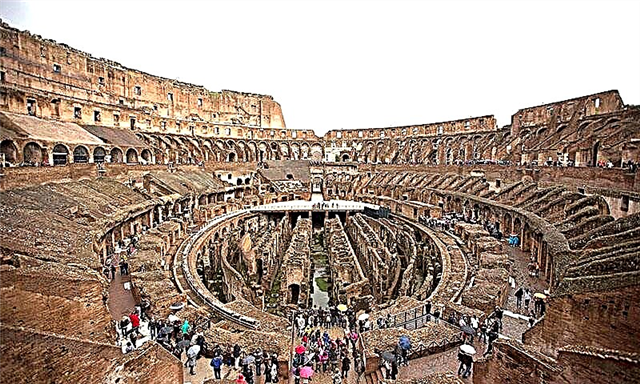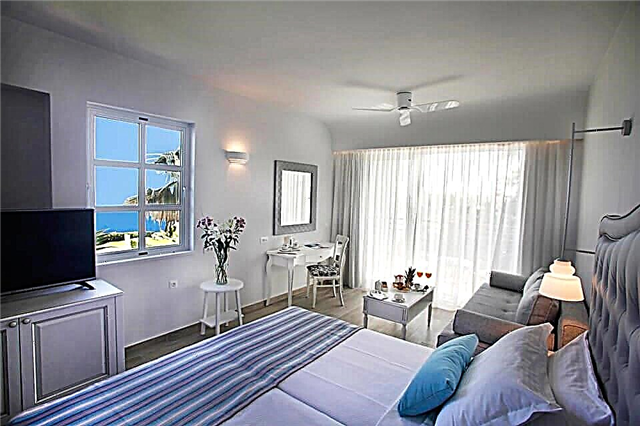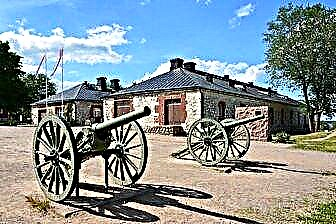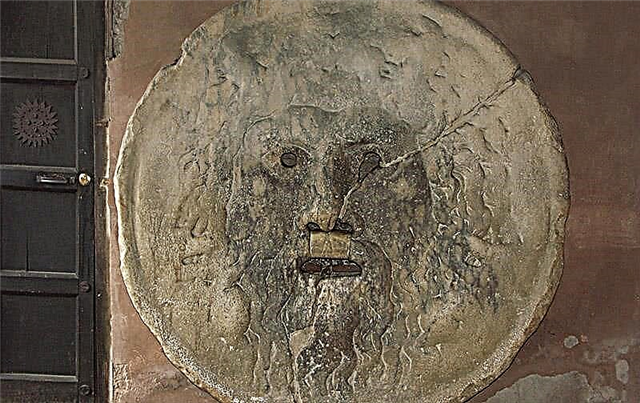We invite you to take a trip to one of the most sacred places on the planet - the majestic Ancient Rome! The unique city was able to absorb the best of its long history. Here, every ruin, every architectural monument is worth its weight in gold.
Coliseum

We decided to choose one of the most fascinating buildings of the Roman Empire - the Colosseum as the starting point of our route. Despite the fact that the construction of the most grandiose amphitheater of the ancient world took place at the very beginning of our era, the structure has survived well and still evokes sincere delight and admiration for the skill of Roman architects. By the way, initially there was a lake on this place, which was part of the Golden House of the despotic ruler Nero, who committed suicide after betraying his supporters.
We also recommend:
- Italy travel guide: hills of Rome
- How to get from the airport to Rome
- Colosseum in Rome, Italy
- Trevi Fountain in Rome, Italy
- How to get to Rome, Italy
- Pantheon in Rome
History connoisseurs probably know that the Roman amphitheater became famous not only for its grandiose size and bloody spectacles that took place in its arena. This is the first such building, where places were numbered and distributed by class.

The best places were with the nobility, members of the imperial families, priests. Well, in the farthest rows they tried to consider everything that happened in the arena, women, foreigners, poor people and slaves. Even today, every visitor to the Colosseum is required to present an iron token with the indicated location.
The modern look of the amphitheater allows tourists to see what this majestic structure looked like during its heyday and what service rooms were located under its stage.
[tp_calendar_widget origin = MOW destination = ROM responsive = true subid = ”imperatorskijrim”]
Arch of Constantine

Not far from the Colosseum is the Triumphal Arch of Constantine, which was erected in 315 in honor of the landmark victory over Maxentius. Interestingly, many of the existing decorative elements and ornaments were removed from earlier monuments. The second interesting fact is that this is the only structure that was dedicated not to the victory over external enemies, but in honor of the end of the civil war.
The structure is 21 meters high and occupies a space 25.7 meters wide. High-quality marble was used as the main building and finishing material.
Roman forum

The central square of Ancient Rome boasts no less impressive and colorful history. Initially, market stalls were located here, and trade flourished. A little later, places for popular assemblies appeared, a curia was created, where the Senate sat. Soon, the main center of trade acquired political functions.
It is believed that in ancient times there was a desert and swampy area, dotted with many sources. And at first, burials of ancient inhabitants were even held here. And the houses of the Romans were located on the nearby hills. Therefore, even today, the Roman Forum has a special relationship.
Sacred road

Meet: the most famous road of Ancient Rome, along which the honorary guests of the city, the rulers and their accompanying processions moved. It connects the Capitol with the Palatine Hill, and its rain and mud cover was created in the 5th century BC.
During the reign of Nero, the road was fortified, and colonnades were installed as decorations. Even then, the road had a width of three meters, its own sewage canal, through which water rushed to the Big Cesspool. In addition to the passage of honored guests, the road had one more purpose - during the celebrations of victory in battles and religious holidays, triumphal processions took place here.
Regia

This building was located on the territory of the Roman Forum, right at the foot of the Palatine Temple. Initially, it was assigned the role of the main residence of the rulers of the city, but after a certain time the Supreme Pontiff settled in it.
Unfortunately, only the foundation of the building has survived to this day. With the change of rulers and the form of government of Rome, the region was repeatedly destroyed, rebuilt and changed its purpose. It is believed that the name comes from the Latin term "regia", which means "royal house", and it is associated with the name of the second king of Rome, Numa Pompilius, who created a real palace on this site.
Rostrum

This ancient speaker platform has been recreated by archaeologists. According to the historical record, the original rostra was restored after the victory of Augustus over Cleopatra's navy. Then, the prows of captured Egyptian ships were used as the main decorations for the tribune, symbolizing another landmark victory of the Romans.
Capitoline wolf

Perhaps the most famous sculptural property of Ancient Rome is the statue of the Capitoline she-wolf. It dates from the 5th century BC. and introduces us to the legend of the babies fed by a she-wolf - Romulus and Remus, who were destined to become the founders of the Eternal City. The Romans believed that the she-wolf was the totem of their ancestors - the Etruscan tribes, whose culture had a significant impact on the formation of Roman civilization.
Capitol hill

This hill is the most famous of the seven hills on which the first ancient Roman buildings arose. The hill was set aside for the needs of the temple of the same name, where significant meetings of the Senate took place, the most important issues were resolved.
Trajan's Column

This monument was also created to commemorate the landmark victory of the Romans. This time, the Dacian tribes acted as opponents of the legionnaires. The height of the column is 38 meters, and inside there is a spiral staircase, with the help of which they climbed to a special platform.
The main decoration of the column is a 190-meter bas-relief in the form of a ribbon that wraps around the monument. It depicts episodes of the said structure.
Palatine

Another hill of Ancient Rome, on which the first settlements appeared. Initially, cattle grazed here, so the hill was named in honor of the patroness of cattle Pales. The first sacrifices to the gods took place here.
Circus Maximus

The largest ancient Roman hippodrome was located in the valley at the foot of the Palantin and Aventine hills. Its area allowed arranging races, in which up to 12 chariots could take part at the same time. It is believed that the first such races were arranged in the 5th century BC.
Mouth of Truth

Under such a mysterious name lies an antique marble slab, which depicts the mask of Triton. It is believed that the monument was created in the 4th century BC, and in the 17th century was housed in the Roman church of Santa Maria in Cosmedin. The Romans believed that if a liar put his hand in the open mouth of a deity, it will surely bite it off.











